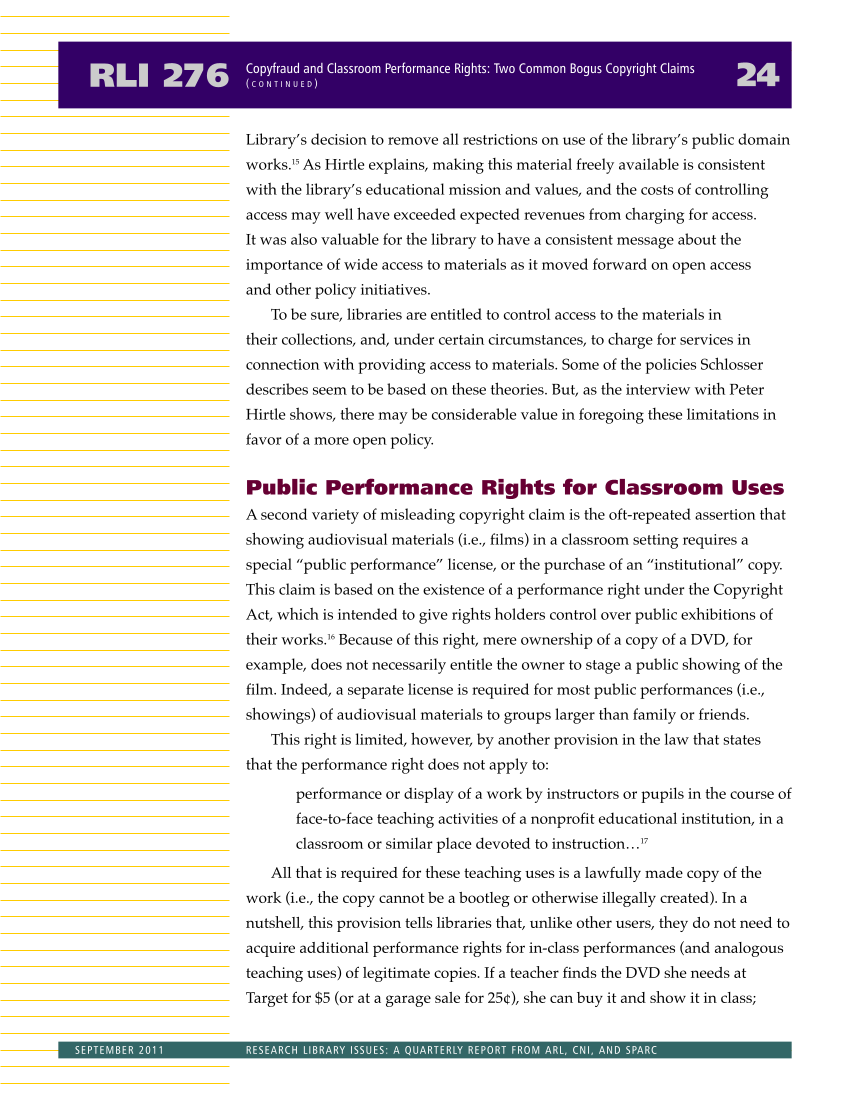Library’s decision to remove all restrictions on use of the library’s public domain works.15 As Hirtle explains, making this material freely available is consistent with the library’s educational mission and values, and the costs of controlling access may well have exceeded expected revenues from charging for access. It was also valuable for the library to have a consistent message about the importance of wide access to materials as it moved forward on open access and other policy initiatives. To be sure, libraries are entitled to control access to the materials in their collections, and, under certain circumstances, to charge for services in connection with providing access to materials. Some of the policies Schlosser describes seem to be based on these theories. But, as the interview with Peter Hirtle shows, there may be considerable value in foregoing these limitations in favor of a more open policy. Public Performance Rights for Classroom Uses A second variety of misleading copyright claim is the oft-repeated assertion that showing audiovisual materials (i.e., films) in a classroom setting requires a special “public performance” license, or the purchase of an “institutional” copy. This claim is based on the existence of a performance right under the Copyright Act, which is intended to give rights holders control over public exhibitions of their works.16 Because of this right, mere ownership of a copy of a DVD, for example, does not necessarily entitle the owner to stage a public showing of the film. Indeed, a separate license is required for most public performances (i.e., showings) of audiovisual materials to groups larger than family or friends. This right is limited, however, by another provision in the law that states that the performance right does not apply to: performance or display of a work by instructors or pupils in the course of face-to-face teaching activities of a nonprofit educational institution, in a classroom or similar place devoted to instruction…17 All that is required for these teaching uses is a lawfully made copy of the work (i.e., the copy cannot be a bootleg or otherwise illegally created). In a nutshell, this provision tells libraries that, unlike other users, they do not need to acquire additional performance rights for in-class performances (and analogous teaching uses) of legitimate copies. If a teacher finds the DVD she needs at Target for $5 (or at a garage sale for 25¢), she can buy it and show it in class RLI 276 24 Copyfraud and Classroom Performance Rights: Two Common Bogus Copyright Claims ( C O N T I N U E D ) SEPTEMBER 2011 RESEARCH LIBRARY ISSUES: A QUARTERLY REPORT FROM ARL, CNI, AND SPARC


































